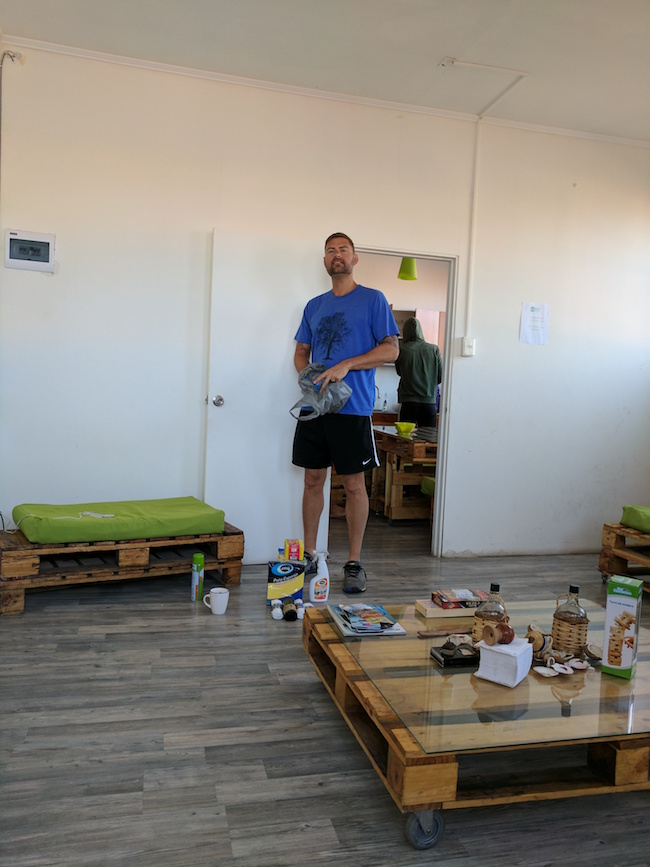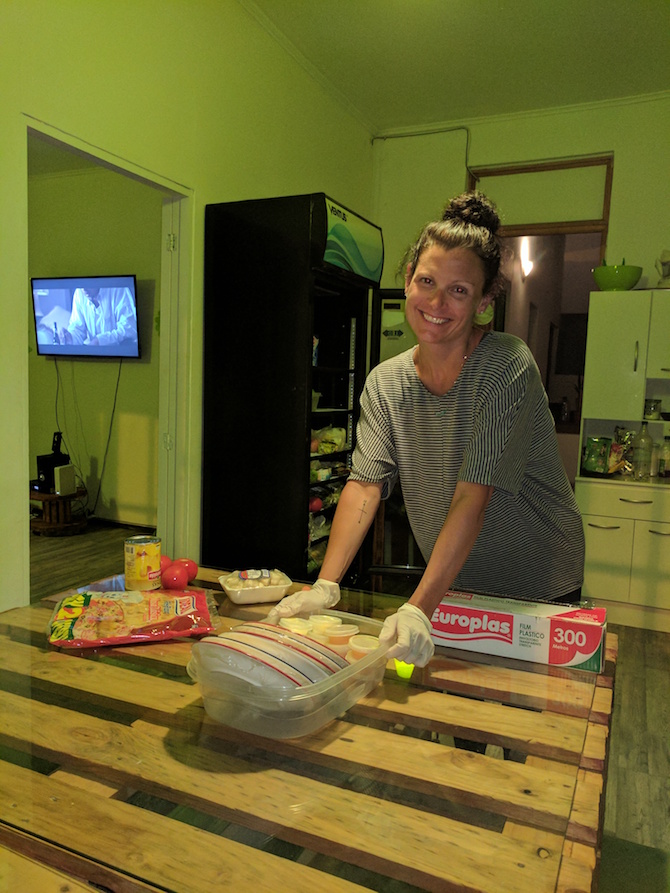Antofagasta, Chile is a port city, sandwiched in between the South Pacific Ocean and the large hills in northern Chile’s Atacama desert coast. Antofagasta is an arid, dry city with an economy based on the mining industry (copper). It is approximately a 15-hour drive from Santiago and a 4-hour drive from the gorgeous San Pedro de Atacama.
If you would rather hear about our 5 weeks in Chile, listen to the Podcast Episode – Podcast 28: Chile Travel – Santiago, Valparaiso, San Pedro de Atacama (& Other Beauty)
Antofagasta (besides Santiago and Punta Arenas) is considered one of the most expensive cities to live in Chile due to the copper mining industry; the high cost of living due to the high demand (houses or apartments to rent or to buy along with the cost of food, gas, clothing, etc.).
Antofagasta, Chile
The average annual temperature is approximately 16.8C (62F) with its warmest month in January and coldest month in July. The Atacama desert coast is extremely dry thus there is little rainfall in Antofagasta (0.13 inches/ year) and people living/staying here must be extremely cautious about the amount of water consumed (showers, washing dishes, etc.).
There are several tourist sites to visit within and nearby Antofagasta during your stay. Also, do not forget that Antofagasta has wonderful beaches where you can catch some rays and relax. Located approximately 18km (11 mi) from Antofagasta city, La Portada (“The Gateway”), a natural monument/ arch made up of sedimentary fossils and rocks that have been eroded and shaped by the wind and sea for thousands of years can be seen.
Also, El Mano del Desierto (The Hand of the Desert), located in the Atacama Desert, is a large-scale sculpture of iron and concrete (11 meters / 36 feet) created to represent human sorrow. On Saturday nights, Cafe del Sol provides a great place to dance and hear Andean music (cover after 11 pm = $3000 CLP/ $4.50 USD).

During our stay in Antofagasta, we had the opportunity to volunteer through Workaway.com and help at a hostel in exchange for a place to stay. For those of you unfamiliar with Workaway, it is an international, online company set up to promote fair exchange between travelers willing to work as volunteers and hosts wanting help with their business, projects, or activities.
The “workawayers” or volunteers are expected to work a pre-agreed upon amount of time per day or week (arranged through the Workaway website via the workawayer and the host exchanging various emails) in exchange for housing and other perks (food, internet service, transportation, etc.) provided by their host. As a traveler, using Workaway is a great way to not only acquire free housing, but it is an ideal way to learn about a foreign country, learn a foreign language, meet new people, and immerse yourself completely in a foreign culture.
Travel Tip: It is important to workout while traveling, especially after long flights because it helps regulate your body quickly to the new environment. We realize that you will be walking a ton, and yes that counts, but you still need to get your stretches and resistance training in so you don’t hurt yourself from being so stiff on the long flight. Plus, you will be eating a ton of food to take in the culture 😉 We prefer to pack resistance bands in case we can’t find a gym. There are a ton of exercises you can do with these things in your Airbnb, hotel room, or hostel. Find this and other tips on our Travel Tools page.
For our first Workaway experience, we worked approximately 4 hours per day in exchange for a place to stay in Antofagasta. We helped our host with various jobs including cleaning the hostel daily (bedrooms, bathrooms, common areas, kitchen, etc.), laundry (washing bed sheets and other guests’ laundry), helping at the reception desk (checking guests in and out, collecting payment, answering general questions, showing the guests the hostel, explaining the local area on a map, etc.), answering the door (greeting interested passerby guests and explaining the hostel cost and rules and allowing current guests to re-enter the facilities), preparing daily breakfast, answering general guest questions throughout the day, and helping our host with her English speaking skills (language exchange so to speak).
During our stay at the hostel we met many other travelers from other countries (Japan, Canada, Germany, France, Chile, and Spain) and we were able to work on our Spanish speaking skills and learn more about the Chilean culture. Our host was very outgoing and hosted several Chilean BBQs at her hostel for the televised, Chilean soccer games in which we were able to meet both her friends and family.
On Saturday nights our host had “cultural exchange parties” at her hostel where people who spoke both Spanish and English could help those interested in learning English; sort of a language exchange. Our host even cooked us a couple of typical Chilean lunches and dinners where we gathered along with the guests at the hostel around the table and had many great conversations about travel over food. We even went dancing at Cafe del Sol with our host to listen to Andean music and dance the night away!
Traveled March 2017


Leave a Reply